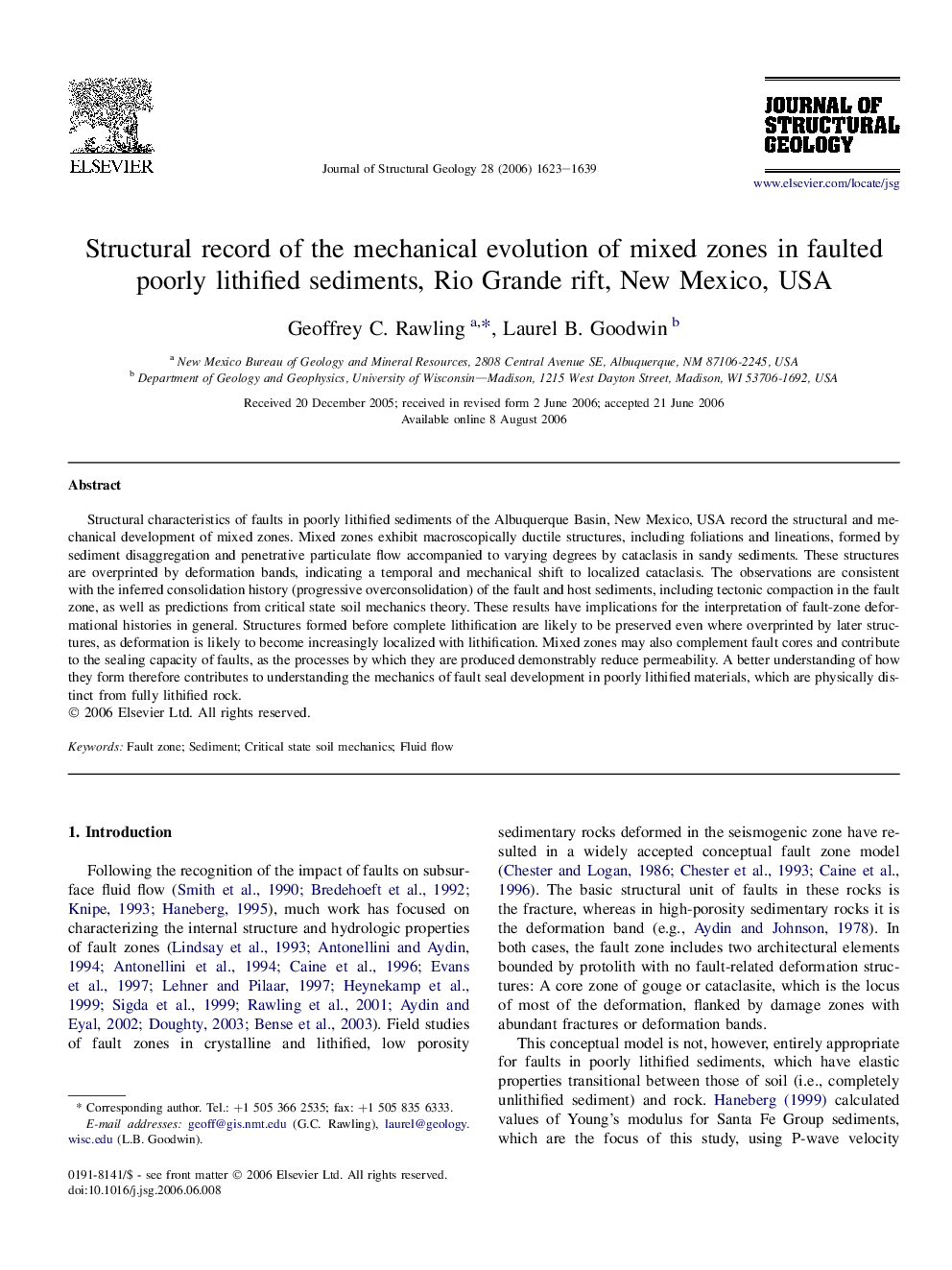| Article ID | Journal | Published Year | Pages | File Type |
|---|---|---|---|---|
| 4734002 | Journal of Structural Geology | 2006 | 17 Pages |
Structural characteristics of faults in poorly lithified sediments of the Albuquerque Basin, New Mexico, USA record the structural and mechanical development of mixed zones. Mixed zones exhibit macroscopically ductile structures, including foliations and lineations, formed by sediment disaggregation and penetrative particulate flow accompanied to varying degrees by cataclasis in sandy sediments. These structures are overprinted by deformation bands, indicating a temporal and mechanical shift to localized cataclasis. The observations are consistent with the inferred consolidation history (progressive overconsolidation) of the fault and host sediments, including tectonic compaction in the fault zone, as well as predictions from critical state soil mechanics theory. These results have implications for the interpretation of fault-zone deformational histories in general. Structures formed before complete lithification are likely to be preserved even where overprinted by later structures, as deformation is likely to become increasingly localized with lithification. Mixed zones may also complement fault cores and contribute to the sealing capacity of faults, as the processes by which they are produced demonstrably reduce permeability. A better understanding of how they form therefore contributes to understanding the mechanics of fault seal development in poorly lithified materials, which are physically distinct from fully lithified rock.
